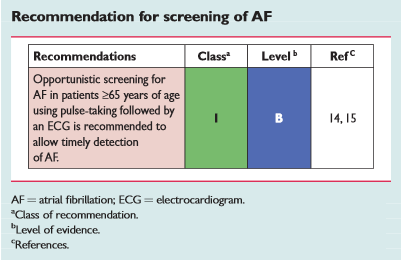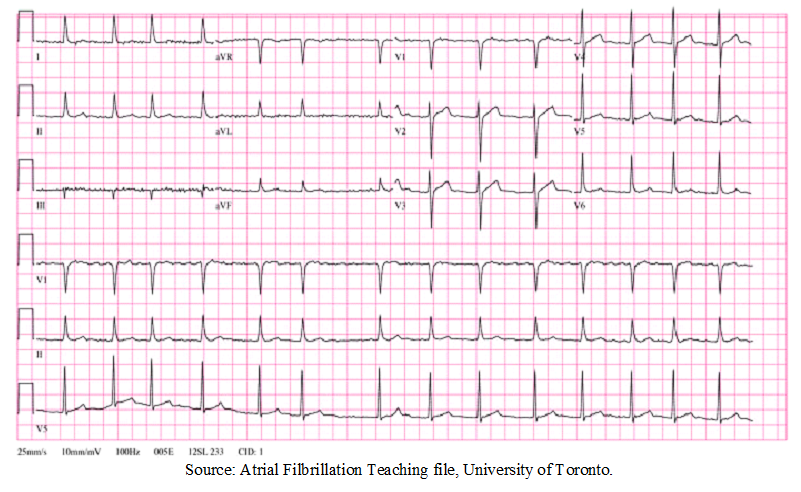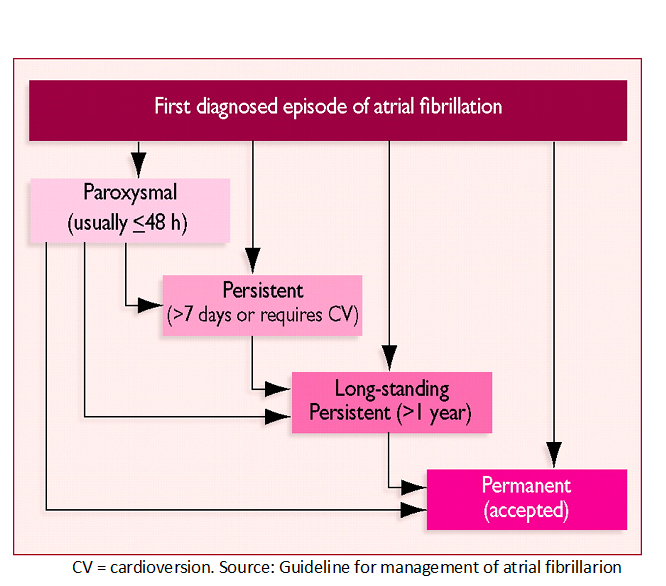Atrial Fibrillation (AF) is the most common cardiac arrhythmia. The current prevalence is estimated 1.5-2% of the general population, with the average age of patients between 75 and 85 years. The arrythmia is associated with a five-fold risk of stroke and a three-fold risk of incidence of congestive heart failure, and higher mortality.
Atrial Fibrillation (AF) is the most common cardiac arrhythmia. The current prevalence is estimated 1.5-2% of the general population, with the average age of patients between 75 and 85 years. The arrythmia is associated with a five-fold risk of stroke and a three-fold risk of incidence of congestive heart failure, and higher mortality.
| The epidemiology studies collected data from patients with implanted devices and Holter ECG showed that even short episodes of “silent” AF covey an increased risk for stroke. Thus , ESC guideline in 2012 recommended the patients aged 65 years or older should be screening for AF by pulse palpation, followed by recording ECG to verify diagnosis with an irregular pulse. It’s important to detect AF prior to the first stroke |  |

Documentation (ECG or Device) of AF is needed to confirm the diagnosis. Atrial Fibrillation is characterized by disorganized atrial electrical activation and uncoordinated atrial contraction. The surface ECG is defined as cardiac arrhythmia with the following characteristics:
(1) The surface ECG shows ”absolutely” irregular RR intervals.
(2)There are no distinct P waves on the surface ECG. Apparently regular atrial electrical activity may be seen in some ECG leads, most often in lead V1.
(3) The atrial cycle length: the interval between two activations is usually variable and <200ms (or >300 beats per minute).
 There are five types of AF:
There are five types of AF:
(1) First diagnosed AF: The patients present with AF for the first time, irrespective the duration of arrhythmia or the presence and severity of AF related symptoms.
(2) Paroxysmal AF: is self-terminating, usually within 48 h. Though AF may continue for up to 7 days, the 48 h timepoint is clinnically important. After this period, the likelihood of spontaneous conversion is low, and anticoagulation must be considered.
(3) Persistent AF: presents when AF episode either lasts longer than 7 days or requires termination by cardioversion, either with drugs or by Direct Current Cardioversion (DCC).
(4) Long-standing persistent AF: has lasted for one year or more when it is decided to adopt a rhythm control strategy.
(5) Permanent AF: is said to exist when the presence of arrhythmia is accepted by the patient (and physician). Rhythm control intervention are not pursued in patients with permanent AF. And the arrythmia is redesigned as ‘ long –standing persistent AF’.
Guideline ESC (escardio.org)
Duc Tin Clinic
Tin tức liên quan

Performance diagnostique de l’interféron gamma dans l’identification de l’origine tuberculeuse des pleurésies exsudatives

A Mixed Phenotype of Airway Wall Thickening and Emphysema Is Associated with Dyspnea and Hospitalization for Chronic Obstructive Pulmonary Disease.

Radiological Approach to Asthma and COPD-The Role of Computed Tomography.

Significant annual cost savings found with UrgoStart in UK and Germany

Thrombolex announces 510(k) clearance of Bashir catheter systems for thromboembolic disorders
Phone: (028) 3981 2678
Mobile: 0903 839 878 - 0909 384 389







